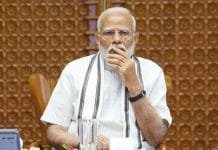The Adani Group’s $4 billion PVC project is set to kick off its first phase by December 2026. This ambitious initiative aims to address India’s PVC demand-supply gap. Read on for a deep dive into this groundbreaking venture.
Introduction
INVC NEWS
Mumbai : The Adani Group, one of India’s most formidable conglomerates, is gearing up for a monumental project that promises to reshape the country’s petrochemical landscape. By December 2026, the first phase of its $4 billion Polyvinyl Chloride (PVC) project is expected to commence. This ambitious venture is not just about business; it’s a strategic move to address a significant supply gap in India’s PVC market and capitalize on growing demand.
But what exactly is PVC, and why is this project such a big deal? Let’s break it down.
What Is PVC and Why Is It Important?
The Basics of PVC
Polyvinyl Chloride (PVC) is a synthetic plastic polymer widely used across various industries. It’s the third most commonly produced synthetic plastic polymer globally. Here’s why PVC is so versatile and valuable:
- Raincoats and Shower Curtains: PVC’s water-resistant properties make it perfect for protecting us from the elements.
- Window Frames and Pipes: Its durability and low cost make it ideal for construction and plumbing.
- Medical Devices: PVC’s versatility extends to healthcare, where it’s used in everything from IV bags to surgical gloves.
- Wiring Insulation: PVC is used to insulate cables and wires, ensuring safe and efficient electrical transmission.
- Bottles, Credit Cards, and Flooring: Its robustness and ease of processing make it suitable for a myriad of other products.
India’s PVC Demand vs. Domestic Production
India’s annual PVC demand is approximately 4 million tons, but the domestic production capacity lags behind at around 1.5 million tons. This creates a substantial supply-demand gap. As consumption continues to rise, this gap is expected to widen, making the Adani Group’s project even more crucial.
The Adani Group’s PVC Project: A Deep Dive
Project Overview
The Adani Group’s plan involves setting up a large-scale PVC production facility in Mundra, Gujarat. The project, slated to be developed in phases, aims to build a 2 million tons per annum (TPA) PVC plant. The first phase is expected to be operational by December 2026, with an initial capacity of 1 million tons annually.
Why Gujarat?
Gujarat, with its well-established industrial infrastructure and strategic port facilities, is an ideal location for this project. The state’s robust logistical network and favorable investment climate provide a solid foundation for large-scale industrial operations.
Financial Hurdles and Market Impact
Initial Delays and Challenges
The project faced a significant setback when the Adani Group paused operations in March 2023. This halt was due to financial constraints and delays in securing essential equipment and site construction. Adding fuel to the fire, Hindenburg Research, a US-based short-seller, accused the Adani Group of financial and accounting fraud. Although the group rejected these allegations, the report triggered a sharp decline in the stock prices of Adani Group companies.
Strategic Comeback
In response, the Adani Group devised a comprehensive strategy to regain market confidence. The plan involved raising $5 billion in equity and securing double that amount in debt. They also repaid some existing loans to stabilize their financial position. With renewed investor trust, work on the PVC project resumed, and progress is expected to accelerate.
The Economic and Environmental Impact
Economic Benefits
- Job Creation: The project is set to generate thousands of jobs, contributing to local economic growth.
- Industry Growth: By increasing domestic PVC production, the project will reduce dependency on imports and stimulate the broader petrochemical industry.
- Infrastructure Development: The establishment of a new industrial cluster will bolster Gujarat’s position as a key player in the petrochemical sector.
Environmental Considerations
While PVC is a crucial material, it also has environmental impacts. The Adani Group is committed to implementing best practices to minimize these effects. This includes adopting advanced technologies to reduce emissions and ensure sustainable operations.
The Adani Group’s PVC project is more than just a significant industrial venture; it’s a strategic move poised to impact India’s petrochemical landscape profoundly. With its ambitious timeline and grand scale, the project will not only help bridge the supply-demand gap in the PVC market but also drive economic growth and infrastructure development in Gujarat.
As we look ahead to December 2026, the success of this project will be closely watched. It holds the promise of reshaping the PVC industry, offering economic benefits, and potentially setting new standards for sustainable industrial practices.
The journey of the Adani Group’s PVC project reflects broader trends in global industrial development and highlights the importance of strategic planning and financial resilience in navigating complex market challenges.



















